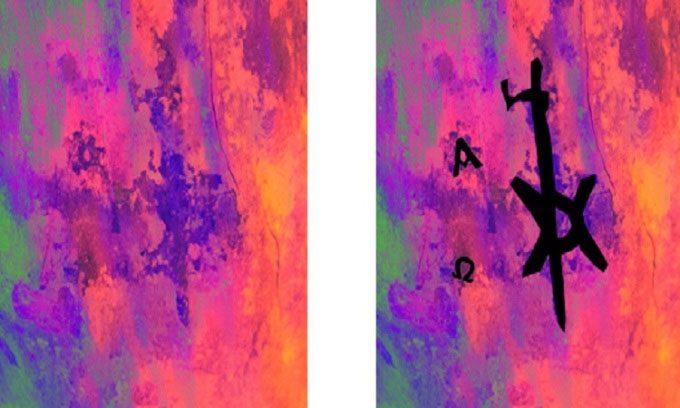Researchers Discover a Tattoo Depicting Jesus Christ on Ancient Skeleton in Sudan.
Scientists in Sudan have uncovered a tattoo related to Jesus Christ on a 1,300-year-old skeleton excavated from a cemetery near a medieval monastery, as reported by Live Science on October 22. This marks the second time such a tattoo has been found in the Nubia region, according to the Polish Mediterranean Archaeological Center (PCMA) at the University of Warsaw, the institution conducting the excavation and research at the Ghazali site. Nubia encompasses present-day Egypt and Sudan.

The tattoo on the foot of the skeleton. (Photo: Kari A. Guilbault).
Located on the right foot of the male skeleton, the tattoo features the Chi-Rho symbol along with the Greek letters alpha and omega. The Chi-Rho symbol consists of the letters “chi” and “rho” in Greek, forming an abbreviation for Jesus Christ. This abbreviation dates back to around 324 AD, when Constantine became the emperor of the Roman Empire. Alpha and omega are the first and last letters of the Greek alphabet, representing the belief that Christ is the beginning and the end of all things.
The placement of the tattoo on the right foot is particularly intriguing, as it is believed that Jesus could have been crucified in this position during his execution, according to Robert Stark, a bioarchaeologist at PCMA, and Kari Guilbault, a tattoo research expert at Purdue University in Indiana. Stark and Guilbault are members of the research team that discovered and analyzed the tattoo.
While the tattoo indicates that the individual in the grave was Christian, the research team is uncertain if he was a priest. This person was not buried in the same cemetery as the priests at the monastery but rather in a cemetery used by the local community. Radiocarbon dating results indicate that this individual lived between 667 and 774 AD. During this time, Christianity was the predominant religion in the region and quite widespread. The deceased was likely between the ages of 35 and 50 at the time of death.





















































